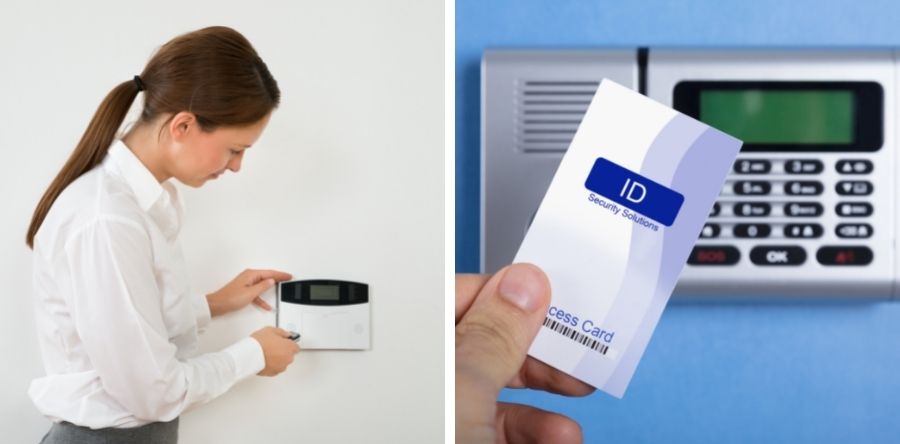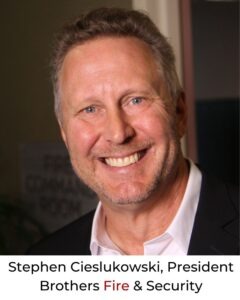Access Doors: Security and Managing Risk
by Stephen Cieslukowski, President | Jun 15, 2021 | Blog Posts, News | 0 comments

Unlike standards for fire safety, such as code requirements and certification, there are no standards for access doors. Instead, administrative oversight of access and keeping track of comings and goings are essential to the safety and security of people and property.
The robustness of your access system and ability to manage it effectively have variable factors. To sort through these issues, this blog will study door access, “tools of the trade,” and vulnerabilities. First, evaluating door access takes careful thought and evaluation, such as:
- Who are the doors for?
- Do they fit your specific security needs?
- Are the doors functioning?
- Are they well-lit?
- Will exit doors function in case of an emergency?
- Are doors better suited for keypads, cards or FABs?
- Do your doors support the kind of access you want?
- Will new doors need to be installed, or existing ones retrofitted?
No matter what the door access level or needs are, an up-to-date plan is key. (Pardon the pun.) Components include:
- Process for outgoing and incoming employees and seasonal staff.
- Access to service vendors and how is this monitored.
- Company policy and protocols for reporting stolen or lost cards or FABs.
- Safety process to follow if there is an access breach, such as cards or FABs being shared without authorization.
- Consulting with your door provider when adding new doors or retrofitting.
Door Access Needs Vary
Every industry has different requirements for door access based on protocols and policies of their risk management. Let’s take a closer look at these unique needs.
Senior Living – The level of access and control is set by management which administers the access. For example, independent living access needs are different than memory care. Staff have different levels of access based on their positions, work hours and areas of responsibility. Door access options include keys for external and internal doors where there is a vestibule in between, and use of cards, FABs or keypads elsewhere.
Memory Care – The nurses’ call station usually handles all the comings and goings. When a patient tries to leave, the outside door is locked. If there is a fire emergency, the nurses’ station is deactivated so that people can get out, but that also means that residents may take advantage of the situation. It’s vital to have a safety plan that includes door access, as well as an evacuation plan
Airports – On average, over 40,000 employees have access to the security sensitive areas of airports across the country, such as general employees, airline hangar tenants, vendors, contractors and ground transportation. That’s considerable activity and a lot to keep track of. In most cases, employees have an ID badge with a card/FAB to specific areas they can access. Lost, stolen or misplaced badges must be deactivated and replaced, but are not always reported.
Schools – Door access is different for private schools and public schools. For instance, public school doors are usually open during school hours. Yet not every door needs to be open during events, sports or evening hours, so evaluation is necessary.
Private schools, however, are sometimes locked during class hours. They use either the same access code, cards or FABs for all the students. The negative for using codes is that they can be easily shared with people who should not have access. Access cards and FABs can be lost or misplaced. Someone could find a lost one and gain access when they don’t have authorization to be there. Sharing cards and FABs are also security issues. Assigning codes to service vendors is another layer of access use, and, unfortunately, misuse.
An additional private school vulnerability is doors can be physically pried or propped open, which should set off an alarm. Doors should be tested at least once a year to make sure the system is working properly. Prop the door open; if it doesn’t set off an alarm, then the system isn’t working and, obviously, needs to be fixed.
Schedulers need to be aware of holidays. Some happen every year, like Christmas and July 4th. Floating holidays (e.g., Thanksgiving, Martin Luther King Jr. Day) are scheduled differently within access systems. Each year take time to synchronize door access based on the school calendar.
Final Thoughts on Door Access
The one thing that all businesses have in common is any breach of access can cause vulnerabilities to the people and places being protected by the system. Code, card and FAB access are great, but only as great as the people who use it and administer it.
Accept the fact that breaches in door access security WILL happen eventually, so be prepared. Everyone who has been given access is required by law to report it immediately. But it’s quite common that people don’t. As a result, access devices are out there that have not been accounted for. You need to have a plan in place to address the breaches and act quickly.
I know door access is a lot to think about, and you have questions and concerns. Brothers Fire & Security will help you sort through your door access security needs, policies and options. Give us a call at 800-607-2767 and we’ll set up a free evaluation to determine the next step.
 About Brothers Fire & Security
About Brothers Fire & Security
As one of the premier providers of fire and security solutions in the Upper Midwest, Brothers Fire & Security strives to build long-term, value-added relationships. We work with business owners and property management companies, as well as all types of public institutions to solve fire and security needs. By taking advantage of our integrated bundled services, many of our clients find that they can save 25-30% on their safety services, annual inspections and more. From a single location to franchises throughout the region and the country, our integrated approach saves our clients valuable time, money, and stress. We provide fire protection systems, security systems, fire sprinkler systems, fire alarm systems, 24-7 monitoring, fire extinguishers, card access and kitchen hoods. We also provide our Online Academy: Life Safety — Made Simple with eLearning courses designed to help you get and keep your staff trained and your business fire and security code compliant.
Recent Posts
- Hidden Risks: Why Aging Fire Systems Need More Than Just Annual Inspections
- Strategic Security Camera Placement: Maximizing Protection Through Integration
- Why NFPA 72 Makes Integrated Fire & Security Monitoring Systems Essential
- Benefits of a Building Access Control System
- Ultimate Guide to Fire Extinguishers: Testing, Inspections, Maintenance
